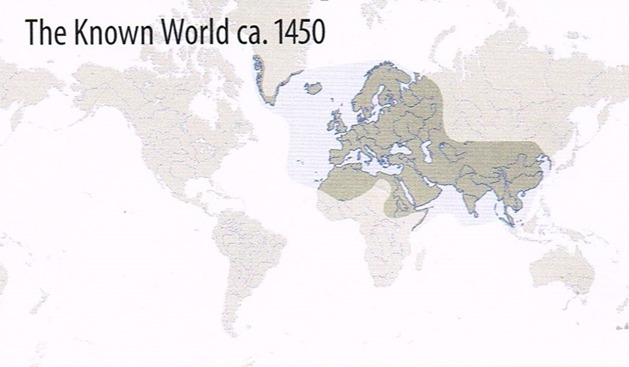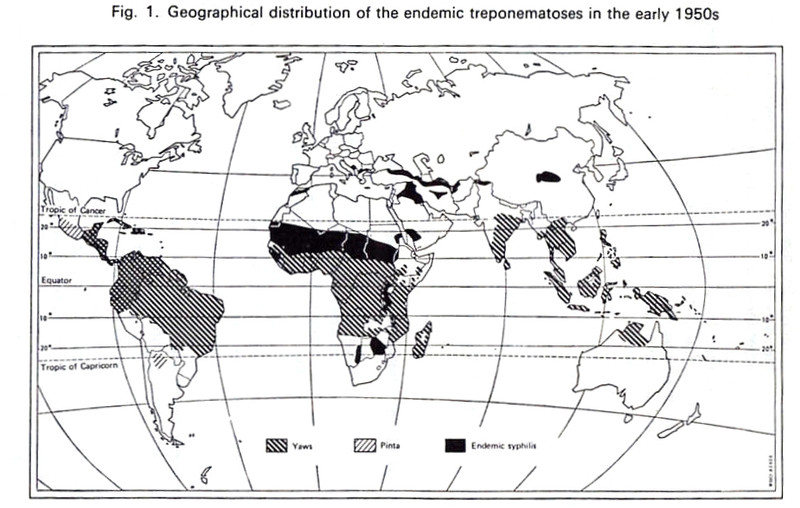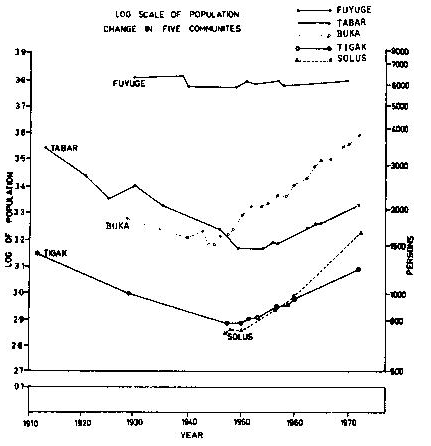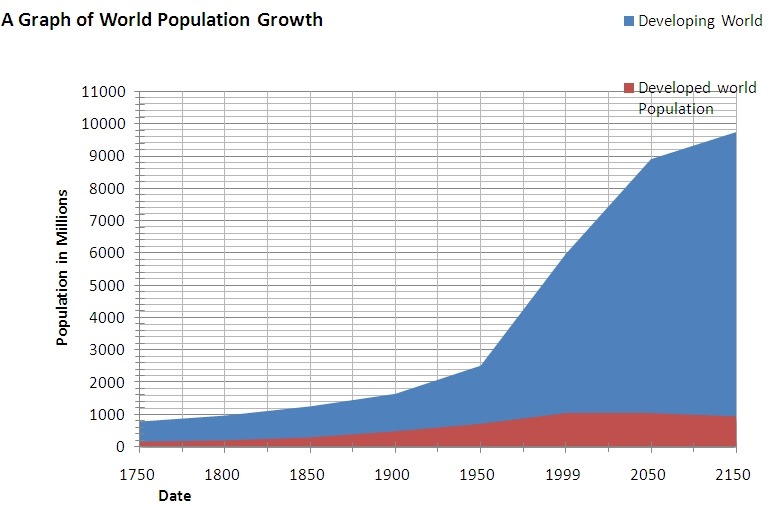
South Australian Medical Heritage Society Inc
Website for the Virtual Museum
Home
Coming meetings
Past meetings
About the Society
Main Galleries
Medicine
Surgery
Anaesthesia
X-rays
Hospitals,other organisations
Individuals of note
Small Galleries
Ethnic medicine
- Aboriginal
- Chinese
- Mediterran
Columbus, West Indies & the British Disease
Acknowledgements:
From a presentation by Dr Roy Scragg to the Society.
1
Columbus, West Indies & the British Disease
Pox and Clap
Gifted to the indigenous people of
The Pacific, New Zealand, and Australia.
2
Until the middle ages, the world as it was known to Europeans consisted only of Asia, North Africa and islands closest to the Europeans.

3
FIRST PHYSICAL CONTACT
outside the world known to Europeans
Santa Maria, a Carrick carack? with two masts; and La Pinta and La Niña, caravels.
Pinta wrecked 39 sailors at La Navidad.
3rd coast of Venezuela.
4th Central America.
4
EFFECTS OF CONTACT
-
Immediate:
- Sexual intercourse
- Killing
- Disease exchange
-
Short term:
- Killing epidemics
- War
- Exploitation of the land
-
Long term:
- Christianisation
- Persistent population decline
- Dead replaced by slaves or indentured labour
The colonists in all cases endeavoured to exploit the land with plantations.
The deaths of most of the young males required importation of slaves or labourers.
5
CONTAINED ENDEMIC DISEASES
The tuberculosis and rabies as zoonosis were present in America and Eurasia.
6
SIGNIFICANT DISEASE TRANSFERS
Wallis in the Dolphin - 8 months later Bougainville. Did not worry about the gonorrhoea but called syph "Apa no Pretane" (English disease).
Smallpox had a short incubation period and high mortality and did not occur in many of the Pacific Islands.
Larger numbers on larger ships and the establishment of towns facilitated the movement of measles, smallpox and other infectious diseases around the world.
7
EPIDEMIC DECIMATION
INDIGENOUS POPULATIONS
All populations estimated except last two.
All of the populations shown were estimated except for those in Tasmania and Tabar.
The Australian figure of 111,000 in 1890 continued to fall and was 60,000 in 1930.
8
SLAVES, CONVICTS and INDENTUREES
In all the other cases the immigration was required to satisfy the demand for labour because introduced diseases had killed significant numbers of young men. In New Guinea, the Germans tried to recruit from New Ireland, but the New Ireland people were aware of the high mortality and poor conditions, and refused.
9
VENEREAL ETYMOLOGY
Greek: Gone = Seed, Rhoia = Flow
Syphilis: Syphilus a mythical shepherd in an Ovid story. In 1530 Girolamo Fracastoro, a physician of Verona, wrote a 1,300 verse poem about Sifilo who contracted syphilis and was saved from death by eating the leaf of a tree.
AIDS: Acquired immunodeficiency syndrome.
Gonorrhoea maimed, Syphilis and AIDS killed quickly.
Syphilis and gonorrhoea were considered one disease until this was finally sorted by Ricord in 1839.
10

11
TREPONEMATOSES
- Treponema spirochaete is a commensal of many animal species and the human mouth.
- 21 strains of Treponema pallidum have been defined and linked to various manifestations.
- Venereal Syphilis variant relates to American lines; probably from a mutation in Hispaniola.
- Endemic syphilis, Yaws.
- Pinta, Bejel.
A person with yaws, bejel or pinta has immunity to syphilis; however these three diseases are limited to tropical countries.
12
Naples 1495
Alexander Benedetto, a papal doctor, reported that he had seen victims who had lost hands, feet, eyes,
and noses because of the disease. Syphilis, he remarked, made "the entire body so repulsive to look at
and causes such great suffering ... that this sickness is even more horrifying than incurable leprosy,
and it can be fatal."
"were as thoughe they hadde lyen in fire"
Europeans were terrified of syphilis.
13
Sturt on the Murray, 1833
"The most loathsome diseases prevailed throughout the tribes, nor were the youngest infants exempt
from them." and: "Syphilis raged amongst them with fearful violence; many had lost their noses, and
all the glandular parts were considerably affected.".
Elsewhere, the 'chiefs' summoned up young men as displays, seeking Sturt's explanation as to how this
novel disease had come to the tribes.
14
Eyre syphilis Moorundie, 1844
written in cryptic Latin
From that time very many were in a dying condition, some died and few, of those who associated frequently
with them of any age or sex, were completely free from the signs of this disease.
This illness seemed to appear among the natives in almost the same way as among Europeans but for
various reasons was even more repulsive, especially because round ulcers almost an inch in size erupted
at the same time on the skin. The centre of these filled with puss seeping forth and as they grew
larger and larger and spread the surface of the whole body was afflicted with putrefaction and scabs
which aroused horror and revulsion in those approaching them.
15
SYPHILIS PANDEMIC
- From Naples by land and sea in all directions over Eurasia from Ireland to Japan.
- From Iberia by explorers to all communities without yaws, bejel or pinta.
- Manifested as a killing disease from primary through to tertiary in months.
- Along with smallpox, influenza and measles it caused massive depopulation.
16
POPULATION DECLINE
- Immunity muted killing epidemics but in many communities deaths still exceeded births.
- Decline of indigenous people was hidden by the increasing numbers of immigrants.
- People and missionaries noticed infertility or unusually small families.
- Last 12 Tasmanian women produced only 2 children, both of whom died; gonorrhoeal infertility.
Gonorrhoea completed the destruction of the Tasmanians.
17
John Gunther to Bob Melrose
13th April, 1950
"On Tabar Island I have started something - I doubt whether it will have any significance, but it
might give some answers."
"We are giving every man, woman and child on Tabar 200,000 units of penicillin, ..."
"We are giving all treatment for hookworm and a course of N.A.B. injections, and are placing
anti-malarials at their disposal."
This blunderbuss therapy was set in motion immediately with a Doctor detailed to ensure it happened. The use of penicillin and what?
18
Gunther to Scragg, June 9 1950
"This will confirm that it is the present intention that you should become District Medical Officer, New Ireland. The District is one where there has been a frank depopulation of 27% in twenty years."
"Such a state of affairs needs early and rapid correction. Much research has been done there recently including a repeat demographic survey by Mr. Chinnery."
The new Australians bound for New Guinea were given lectures by Camilla Wedgwood on anthropology including depopulation. These lectures conditioned Mezaros and Ziegas to consider kuru a psychosomatic condition.
19
Population of 5 Communities

The depopulating populations of Tabar and Tigak responded to the penicillin campaign after 50 years of consistent decline.
Buka had a similar decline caused by high mortality from 1930 to 1946, then more than doubled by 1972.
The nadir was at the end of the war for all populations studied except for Fuyuge where the dominance of seasonal malaria caused the balance of mortality and fertility.
20
HYPOTHESES
- The people blamed sorcery or deliberate consumption of reputed contraceptives or abortifacients plants.
- Missionaries rejected sorcery but accepted the latter reasons.
- Anthropologists postulated psychological causes resulting from the disruption of the traditional culture by the invaders and Christianity.
- Medical administrators and native affairs officers were confused by opinions but agreed with anthropologists.
- Doctors in active care of the people were frequently presented with genital and pelvic conditions in both sexes pathognomonic of gonorrhoea.
Reputation made during the war but maintained in anthropology.
The Doctors who had worked in depopulating areas pre-war had disappeared, and the post-war Doctors came under the influence of the anthropologists.
21
PROMISCUOUS INTERCOURSE
- Powdermaker noted in Malagan ceremonies New Ireland people would: "dance for several more hours, far into the night, which concludes with promiscuous intercourse. The only rule observed is the one of exogamy between members of the same moiety."
- Cook records that off Hawaii: "It was not possible to keep [the women] out of the ship and no women I ever met with were more ready to bestow their favours, indeed it appeared to me that they came with no other view."
The New Ireland women had a reputation for promiscuous behaviour.
Coulter in the 1950’s reported aggressive behaviour by Polynesian women from other islands.
22
THE CONUNDRUM
a psychosomatic phenomenon
"the physical causes were contributory to the wider psychological ones, or agencies through which these latter worked."
"But the root of the matter lay with that curious despair which dominated the native mind and coloured his every action and thought".
Roberts, 1927 and still taught in 1952.
23
ON THE CONTRARY
a physical condition.
- Sailors infected with chronic gonorrhoea introduced this infection into the promiscuous New Ireland society and the Malagan ceremony primed an epidemic.
- The failure to produce children caused the ‘curious despair’.
24
STUDY OF POPULATION DECLINE
- In New Ireland intercourse was a frequent event and conception should have occurred.
- The people of Kavieng were desperately changing partners but they got only ectopic pregnancies or nothing.
- For the first time in the 50 year study of population. decline, there was an X-ray unit which enabled the investigation of female infertility.
25
Responsible partner in infertile couples
26
Buka and New Ireland, 1953
In Tigak and Tabar, 40% infertility rate was significant. In Solas, infant mortality was 32%, but depopulation did not follow as infertility was only 9%.
27
Copy of page 19, skip
28
INFERTILITY FROM GONORRHOEA
WHO expert committee 1975: "The most complete epidemiological study on the prevalence of infertility, pregnancy wastage, and child loss is that by Scragg on New Ireland in the West Pacific. This study combined a demographic survey and clinical diagnostic studies on defined groups of women".
29
HIDDEN EPIDEMIC
- Over time epidemic gonorrhoea was as significant as smallpox as it continued to gnaw away at communities year after year.
- Epidemics passed unnoticed but the permanent sequelae were epidemic. 'Gonorrhoea' does not appear in McMichael's world epidemiology.
- If gonorrhoea had not been identified as the principal cause of population decline in 1953, the persistent decline would have gone down in world history as a psychosomatic phenomenon.
30
AMERICAN BLACKS
- Peter Pirie studied the changing fertility of this population before and after penicillin use. In 1980 25 million were counted.
- If there had been no gonorrhoea from 1930, Pirie has projected this segment of the American population would have been 40 million by 1980.
31
PENICILLIN THEN THE PILL
- The level of promiscuous behaviour set the prevalence of gonorrhoea in a community.
- Gonorrhoea was more effective than the condom or any other contraceptive in limiting population growth in many countries.
- Penicillin was universally available from 1950 and reduced pelvic infections, and new brides became pregnant.
32
1960's POPULATION SPIRAL
Penicillin lowered mortality and reduced the incidence of gonorrhoea, raising fertility and opening the population flood gates in countries where its use was not succeeded by a significant adoption of the contraceptive pill.
33
WORLD POPULATION

34
Principal references
- Bonwick J: The last of the Tasmanians. 1870
- Butlin N G: Our own aggression. 1983
- Cleland J B: Diseases among the Australian Aborigines. J. Trop. Med. Hyg. 1928
- Dowling J F: A Great Deal of Sickness. 1997
- Eyre E J: Journal of Discovery Vol 2. 1845
- Sturt C: Two Expeditions into the Interior. Vol 2.1833